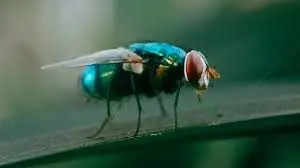
(Washington, D.C., September 21, 2025) – Late Sunday, Mexico’s National Service of Agro-Alimentary Health, Safety, and Quality (SENASICA) confirmed a new case of New World screwworm (NWS) in Sabinas Hidalgo, located in the state of Nuevo León, less than 70 miles from the U.S.-Mexico border.
This is now the northernmost detection of NWS during this outbreak, and the one most threatening to the American cattle and livestock industry. Sabinas Hidalgo is located near the major highway from Monterrey, Nuevo Leon, to Laredo, Texas, which is one of the most heavily trafficked commercial thoroughfares in the world.
“Protecting the United States from NWS is non-negotiable and a top priority of the Trump Administration,” said U.S. Secretary of Agriculture Brooke L. Rollins. “This is a national security priority. We have given Mexico every opportunity and every resource necessary to counter NWS since announcing the NWS Bold Plan in June 2025. Nevertheless, American ranchers and families should know that we will not rely on Mexico to defend our industry, our food supply, or our way of life. We are firmly executing our five-pronged plan and will take decisive action to protect our borders, even in the absence of cooperation. Furthermore, we will pursue aggressive measures against anyone who harms American livestock.”
The previous northernmost detection was reported on July 9, 2025, in Veracruz, approximately 370 miles farther south. Preliminary reports from SENASICA indicate that the affected animal—an 8-month-old cow—had recently been moved to a certified feedlot in Nuevo León from a region in southern Mexico with known active NWS cases. The potential link to animal movement underscores the non-negotiable need for Mexico to fully implement and comply with the U.S.–Mexico Joint Action Plan for NWS in Mexico.
Currently, U.S. ports remain closed to imports of cattle, bison, and horses from Mexico.
Since July, USDA alongside Mexico, has been actively monitoring nearly 8,000 traps across Texas, Arizona, and New Mexico. To date, more than 13,000 screening samples have been submitted, with no NWS flies detected. USDA is analyzing all new information related to the recent case in Nuevo León and will pursue all options to release sterile flies in this region as necessary.
In addition, USDA will soon release a significant plan to help rebuild the American cattle supply, incentivizing our great ranchers, and driving a full-scale revitalization of the American beef industry. This is only the beginning with many more announcements coming this week as USDA restores American strength, protects food security, and supports America’s ranchers and farmers.